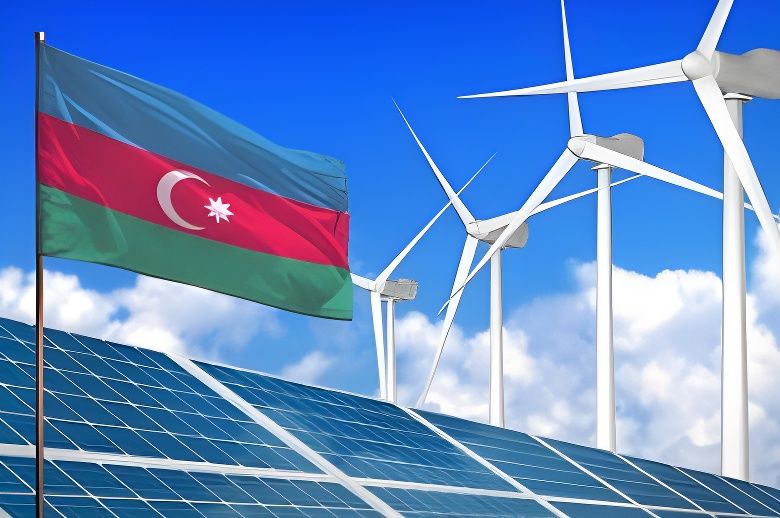Baku greenlights twin energy projects in strategic shift toward low-carbon future

Azerbaijan has taken a major step toward its low-carbon future with the final investment decisions (FIDs) for two landmark energy projects: the 240MW Shafag solar power plant in Jabrayil and the electrification of the Sangachal terminal, one of the world’s largest oil and gas facilities. These strategic developments were officially sanctioned at a high-level ceremony during Baku Energy Week, signaling a transformative shift in Azerbaijan’s energy mix and its long-term partnership with bp.
Both projects align with President Ilham Aliyev’s national strategy to accelerate the use of renewables under the “Green Energy Zone” vision. Spearheaded by bp, SOCAR Green, and the Azerbaijan Business Development Fund (ABDF), the Shafag solar plant represents bp’s first solar investment in the country and marks a new dimension of its cooperation with Azerbaijan. The $200 million plant, located in the liberated Jabrayil district, will be developed by Lightsource bp, a company fully owned by bp. Its shareholding structure includes bp with 50.01%, SOCAR Green with 39.99%, and ABDF with 10%. Construction is expected to begin this year and continue through mid-2027, creating up to 400 local jobs at peak activity.
Simultaneously, the $230 million Sangachal terminal electrification (STEL) project has been greenlit by a consortium of global energy giants including SOCAR, TPAO, LUKOIL, SGC, TotalEnergies, and others. The STEL initiative will connect the terminal to the national grid through a new 220/110kV substation built by AzerEnerji OJSC, enabling a phased removal of seven gas turbines currently in use. This transition will free up fuel gas for export and is expected to reduce operational emissions at the terminal by around 50% over its future lifespan.
At the heart of these projects is an innovative mechanism called the “virtual power transfer arrangement,” which enables clean electricity generated by the Shafag solar plant in Jabrayil to be fed into the national grid, while an equivalent amount is delivered to the Sangachal terminal near Baku. This smart commercial solution supports emission reduction without the need for long-distance physical power transmission and demonstrates Azerbaijan’s growing capacity for innovative energy integration.
A comprehensive set of agreements was signed in support of both FIDs. These include a utility power purchase agreement and transmission connection agreement between SJSL and AzerEnerji for Shafag, as well as engineering, procurement, and construction contracts, an energy supply agreement, and an operations and maintenance agreement between AzerEnerji and bp for the STEL project. Additional balancing and power purchase agreements were also signed to link both initiatives under a cohesive framework.
Energy Minister Parviz Shahbazov welcomed the decisions, calling them a milestone in Azerbaijan’s energy transformation:
“The construction of a 240MW solar plant in the Green Energy Zone and the electrification of the Sangachal terminal exemplify our joint, innovative approach to energy security and emissions reduction. Together, we are laying the foundation for a sustainable, low-carbon future.”
Baba Rzayev, chairman of AzerEnerji, highlighted the national significance of the new developments:
“The Shafag and Sangachal projects not only strengthen our green energy portfolio, but also open new avenues of international cooperation, supporting both carbon reduction and regional energy leadership.”
Gordon Birrell, executive vice president for production and operations at bp, emphasized the innovation behind the dual initiative and its broader implications:
“Today’s decisions mark a new stage in both our cooperation with Azerbaijan and our regional business. The Shafag project starts a new dimension of our successful energy collaboration as it marks our first investment in the development of solar energy in the country. We are excited by the new innovative approach that links these two projects. It will enable us to reduce the operational emissions from the biggest facility we operate in Azerbaijan. We welcome this new development in our long-standing partnership with Azerbaijan, which is focused on oil and gas, and are confident that it can help to pave the way for further sustainable energy developments in the region.”
The STEL project, operated by bp at the Sangachal terminal, will also begin construction this year and is scheduled to be completed in two phases—Stage 1 by mid-2027 and Stage 2 by the end of 2028.
As Azerbaijan accelerates its path toward sustainable energy, these two projects represent not only a shift in how energy is produced and consumed, but also a powerful statement about the country’s commitment to leading regional decarbonization efforts. With innovation, cooperation, and bold investment, Baku is turning its energy future green—one project at a time.
Here we are to serve you with news right now. It does not cost much, but worth your attention.
Choose to support open, independent, quality journalism and subscribe on a monthly basis.
By subscribing to our online newspaper, you can have full digital access to all news, analysis, and much more.
You can also follow AzerNEWS on Twitter @AzerNewsAz or Facebook @AzerNewsNewspaper
Thank you!

